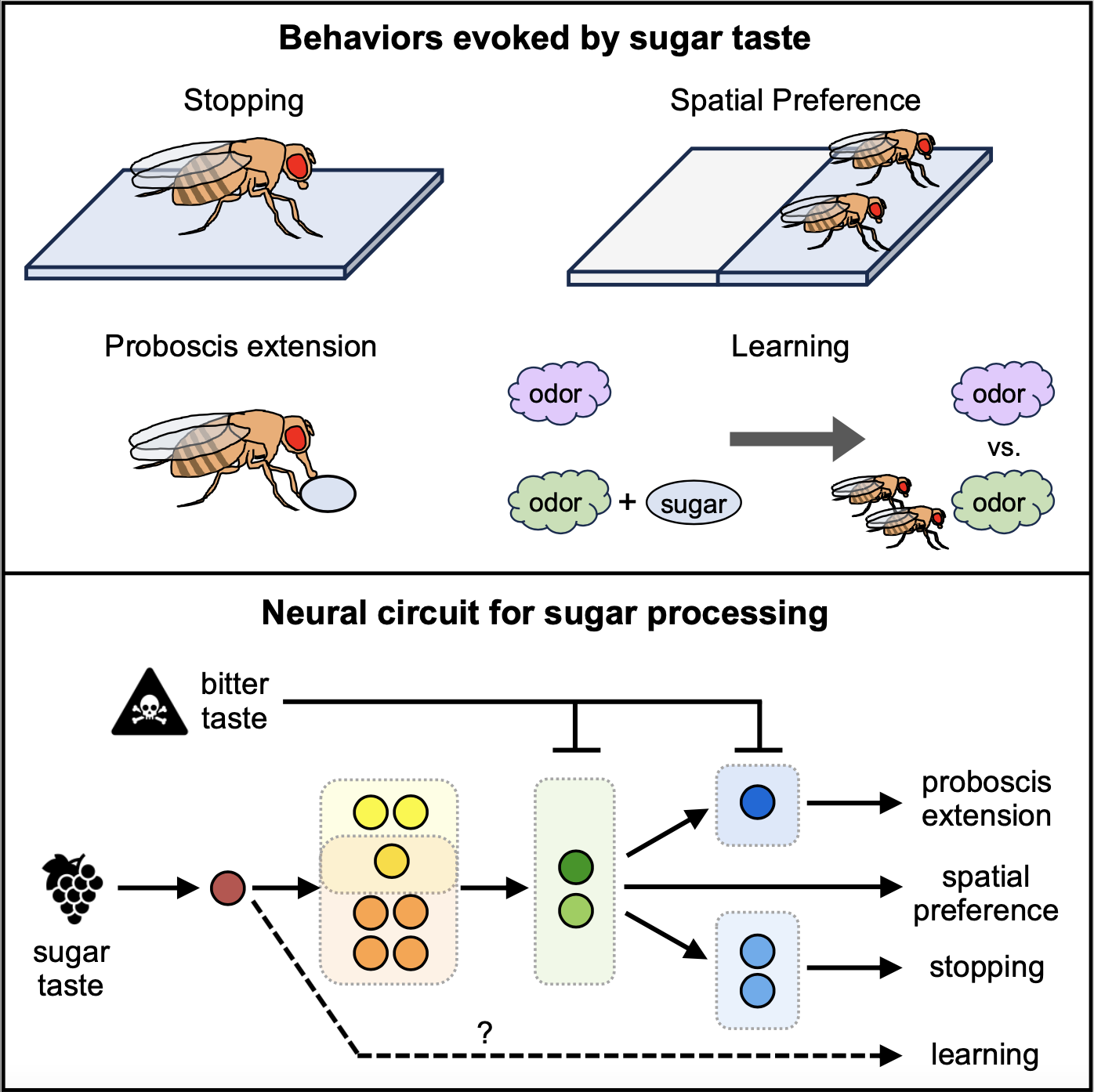Our paper on the sugar circuit is published in Cell Reports!
Right on the heels of our new preprint on connectomic analyses of taste circuits, we’re excited that our paper on the sugar taste circuit has now been published in Cell Reports (link here)! This is a revised version of the paper that we posted on bioRxiv last year, and major credit for revisions goes to first author Ruby Jacobs, a fabulous research technician in the lab.
The study investigates how the sugar taste circuit diverges into different pathways that mediate different behavioral responses and how these behaviors are modulated by factors such as hunger, diet, and bitter taste. Our post from last year describes more about the background and initial findings (and I recommend still reading the original bioRxiv paper, as nearly half of the old text had to be cut due to length restrictions). The revised paper has a TON of new data, including computational simulations of the sugar circuit, experiments to investigate interactions between the sugar and bitter pathways, and more.
You can also read this feature article from Emory News on our paper’s findings!
Our main takeaways are: 1) neural circuits mediating different innate responses to sugar are partially overlapping and diverge at the second and third layers, 2) neurons in the sugar circuit likely act synergistically to promote downstream activity, and 3) different modulatory factors act at different nodes of the sugar circuit to modulate behavior. We think this study not only provides new insight into sweet taste processing, but also reveals more general principles of how neural circuits are organized.
This study was led by research specialist Ruby Jacobs with important contributions from undergraduates Crystal Wang, Lam Nguyen, and Penny Wang; PhD student Trinity Pruitt; former research specialist Fiorella Lozada-Perdomo; and two former technicians that Dr. Devineni mentored in the Axel lab (Julia Deere and Hannah Liphart). Congratulations to all the authors!

